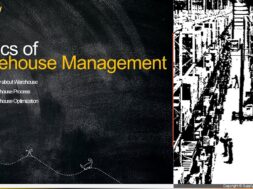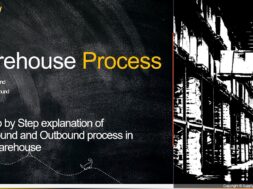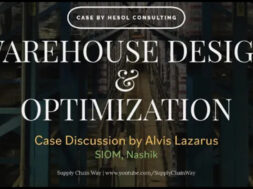
Inventory Blunders that Haunt your Business
As I write this article, I have lead more than 150+ Projects in Supply chain across many countries throughout my career and the real inspiration to this article is that ‘In each of those projects, the flavor of Inventory was always there either part of the issue or the solution’. I have also seen when the scale of business is big, there were more lapses or issues related to inventory.
I have consolidated and written about 4 main issues related to Inventory which really has the capability to negatively impact the business.
- Legacy Black Box
- Tweaking in Panic
- Policies in Isolation
- Broken Loop
Let me explain each of them in detail.
(1) Legacy Black Box –
Legacy systems do prevail in organizations and it is not wise to just ignore them and move on just because that a new system/software is available in the market. But, the actual issue is –
“Over the years, too much Confidence and Dependency on the Legacy systems without knowing what is going on inside actually makes the Legacy system a Black Box’.”
I still remember one of our client, a senior Vice President Supply Chain stating ‘Our IM system is one of the best and it is working like a charm for past decade’. But when we completed our measure and analyze phase, the root of the issue was the system itself. It was not being visited for past decade and it had been assumed that all is well. Fixing and fine tuning the system yielded a ~30% reduction in channel inventory.
“So, the point here is ‘Never let your System / Software become a Black Box’.”
Ensure the system parameters are visited on timely basis and needed updates are done. When the system’s capability is not good enough for your Business, then that is the time to find out the way forward with an upgrade.
(2) Tweaking in Panic –
This is a typical example of creating a chaos and a decision in panic. We all know that even the best of Inventory systems can’t be 100% efficient when it comes of prediction. But that doesn’t mean that you spend all your effort to get this to 100%, it is practically impossible to do that. When the planning manager decides to get to perfection, the effects are: Usage of multiple IM Models and tweaking the system so frequently.
“Though it sounds like a great job by the planning team, Inventory process takes time to stabilize. Tweaking on a non-stabilized process would create a chaos, then it creates Panic and a decision in panic would lead to a disaster.”
The best practice to avoid this is to Simulate the models before implementation as well as give sufficient time for the process to stabilize before further refinement.
“Never ever Tweak an Inventory Parameter on a Live engine (Process) which is not stabilized.”
(3) Policies in Isolation –
I would easily say that this is one of the most common blunders while setting up the IM Policies and Protocols for the Organization. As a Consultant, it is easy for us to identify this and fix it but most times the damage already caused by these decisions take a longer time to get things back to normal.
“Few Inventory Heads claim that they own the Inventory policies. Ownership is good but there is a fine line between Ownership and taking decisions on your Own. With respect to IM, since the decisions impact every function of the organization, it is always mandatory to have a decision with all the Functional Heads being kept in loop and heard well too.”
To be more precise, not just the policies even the Inventory decisions have to be taken with all the stake-holders informed and kept in loop.
“The best solution to ‘Decision in Isolation’ or even to prevent an organization to get into this issue is ‘To have a S&OP Process Structure in place and a Rigor in executing that’”
(4) Broken Loop
Actually it is a great loss of effort and money for the organization and most times have a bad impact on the organization’s health (P&L). The crux of the issue is simple – the planning team does every hard work to put things in place but there is no close looping in-terms of real time performance monitoring and measurement.
“Once the Planning team failed to close loop, the gap would get filled by none other than the Operations team. Once operations team started to take localized planning decisions, it will lead to non-standardized work flow and in a longer run would even impact the core culture of the organization.”
The best way to handle this is for the planning team to manage efficiently and close loop. Pick all the key indicators and actual performance data from the processes to efficiently refine the crucial IM Algorithms. If this becomes a routine (but do keep a note on Tweaking), the overall supply chain will run like a well-oiled machine.
I would complete this article by saying one of the quote which I strongly believe in –
“Inventory is never a Waste when you know ‘Why you Hold it?!’ & ‘How much to Hold?!’ When you know this, it is a key Edge/Lever to have an Optimized Supply Chain with highest order of Customer Service Excellence.”
Do pick all these points to revisit your Inventory systems and Policies. All the best!!!


















